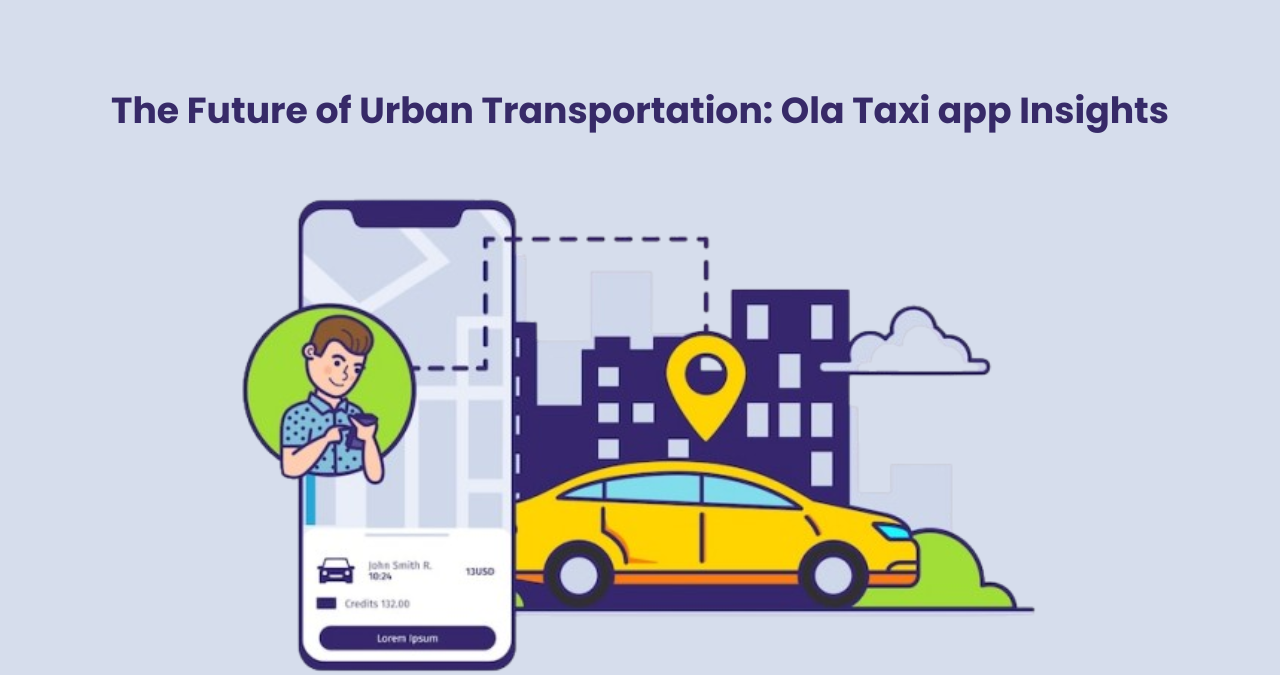
The Future of Urban Transportation Ola Taxi app Insights
Among the leading players in the Ride-Hailing industry, Ola Taxi App, a Homegrown India Taxi app, has played an important role in re-shaping people’s way of traveling. In this article, we dive into the future of urban transport, focusing on the insight that can be collected from the success of Ola, and how APP development companies can contribute to the development of the region.
Understanding the Growth of Ola
Ola started as a simple solution for the problem of unavailability and disability in urban transport in India. Established in 2010, the app rapidly became one of the country’s largest ride-hailing services, providing millions of rides daily in a wide range of cities. Only a handful of cars, which started with millions of vehicles in its fleet, have developed in large-scale operations. But it did not stop there – OL has consistently expanded its services, from bikes to electric vehicles (EVS), to meet the diverse requirements of urban travelers.
Ride-hailing apps like Ola are stepping ahead to fill the gaps left by the cities’ inability to accommodate the demand for increasing traffic and conventional modes of transportation like buses, cabs, and trains. Particularly for contemporary urban areas commuters, these platforms provide more adaptable, reasonably priced solutions.
Key Trends Shaping the Future of Urban Transportation
Electric Vehicles (EVs) and Sustainability
One of the most important changes in the future of urban transport is to adopt electric vehicles (EVS) widely. With environmental concerns on growth, cities around the world are emphasizing for cleaner transport options. Ola has already taken steps to adopt this change by launching its fleet of electric vehicles under the brand name “Ola Electric”.
EVs are an appealing decision for both consumers and ride-hailing services because they are not only environmentally sound but also have cheaper long-term operational costs. As EVs continue to gain popularity in the market, Ola’s efforts to include them into its fleet point to a trend that will spread within the next several years.
Autonomous Vehicles
While we are not yet fully living in a world with autonomous vehicles, the future of urban transport has been promised with the development of self-driving cars. Companies like OLA are already investing in research and development to detect autonomous ride-hailing solutions. Integration of autonomous vehicles will bring a revolution in the way of movement of people, making the journey more convenient, faster, and possibly safe.
The general effectiveness of the public transportation network will be seriously affected by the deployment of autonomous vehicle technology. Ride-hailing networks can lower costs and boost availability because they do not require human drivers, making transportation more affordable for people across multiple urban regions.
Data-Driven Transportation Solutions
Data analytics in the transport sector are becoming increasingly important. Companies like Ola, user behavior, traffic patterns and data on ride demands can adapt their services, by collecting and analyzing data. Through machine learning and artificial intelligence (AI), these platforms can predict demand, set dynamic pricing and suggest the fastest routes.
Ola uses these advanced techniques to improve the user experience by already offering better passage options, reducing waiting time. Even adjusting pricing depending on real -time demand. The future of urban transport will rely too much on data, as it can help cities and companies make informed decisions about infrastructure development and service optimization.
Shared Mobility and Ride Pools
Like traffic congestion and pollution levels increase, more people are going into shared mobility solutions to reduce costs and environmental impacts. Riding Pooling, where many passengers share a ride for their destination, gains popularity in cities.
This shared model helps reduce the number of vehicles on the road. Eventually contributing to low congestion and low carbon emissions. The future of urban transport will possibly have an increased emphasis on shared mobility, as it provides both environmental and economic benefits.
The role of Ola taxi app in shaping urban dynamics
Ola has quickly become an important player in the urban transport ecosystem, and its role expecte to grow only in the coming years. Some of the major factors helping to make Ola successful include:
User-Friendly Interface
Ola’s mobile app is made keeping in mind the simplicity. Users can easily ride, track drivers, and pay – all from their smartphone convenience.
Customizable Services
Various services of Ola – such as Ola Mini, Ola Prime, Ola Rental and Ola Auto-Sensor. Users have options that fit their specific requirements and budget. Whether you need a quick ride in the entire city or a vehicle, Ola’s adaptable services for a long journey, provide flexibility. The future of urban transport apps will possibly focus on offering even more individual options for users. Making it easier to select the right service for every situation.
Safety and Trust
In a crowd and fast-paced urban environment, safety is a top concern for passengers. The OLA has integrated features such as real-time ride tracking, emergency contact, and driver rating to make passengers feel safe. The introduction of features such as Ola Guardian, which sends ride updates for real-time contact, displays the company’s commitment to safety.
As the competition grows in ride-hailing space. App development companies will need to focus on increasing security facilities to maintain user confidence. In the future, we can see even more new security features, such as facial identification for driver authentication, which will further increase the protection of urban transport.
Conclusion
The future of urban transport is ready for major changes. Which is inspired by technology, stability, and progress in user-centered solutions. Companies like OLA are at the forefront of this change, adopting electric vehicles. Searching for autonomous cars and providing more flexible, shared transport options. By embracing data-powered strategies, hail and similar ride-hailing apps are shaping how people enter cities.
For businesses entering this growing area, it would be necessary to partner with an experienced app development company. A strong, user-friendly platform that integrates new features will be important for success. As we look forward, urban transport will be rapidly efficient, durable. Accessible for the ongoing development of technologies such as the Ola app. more






